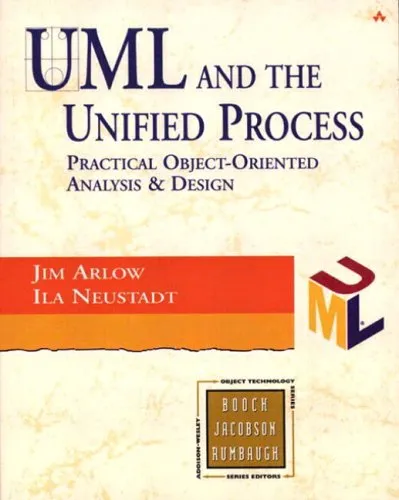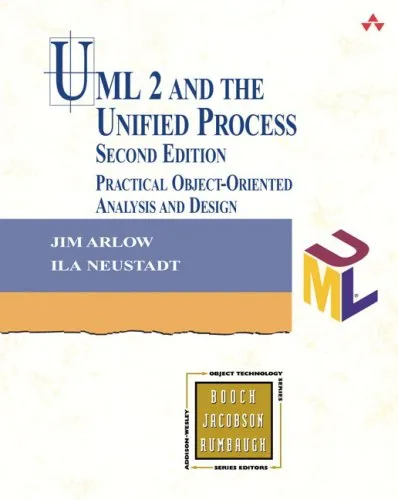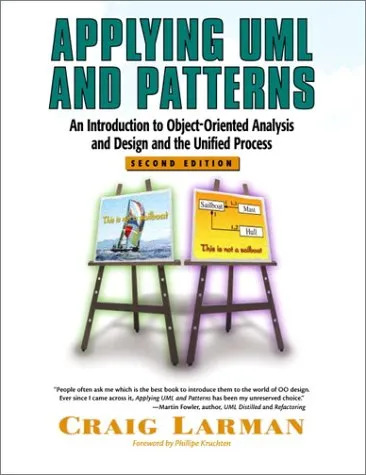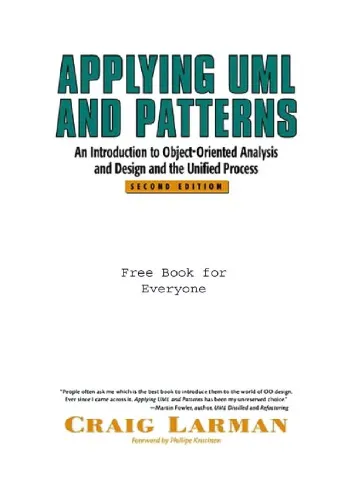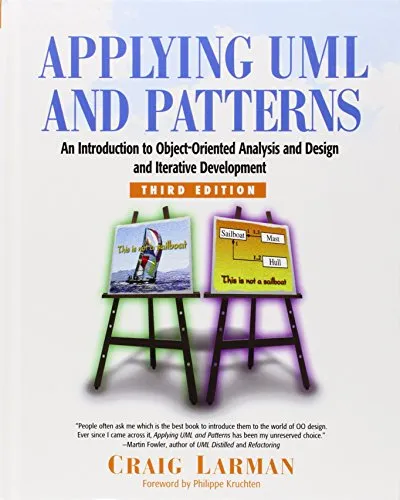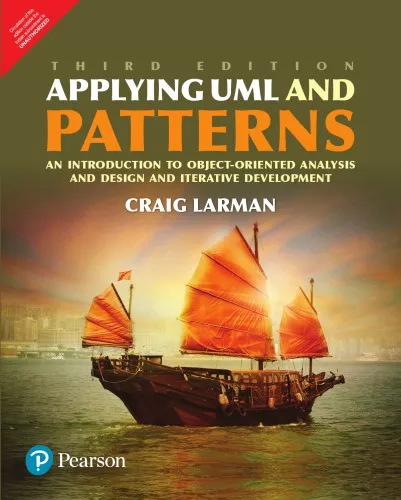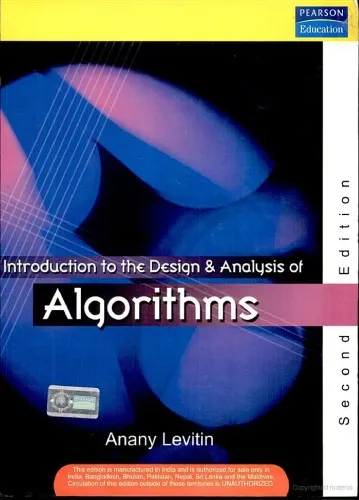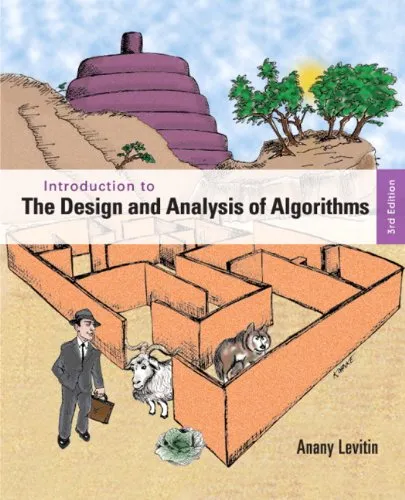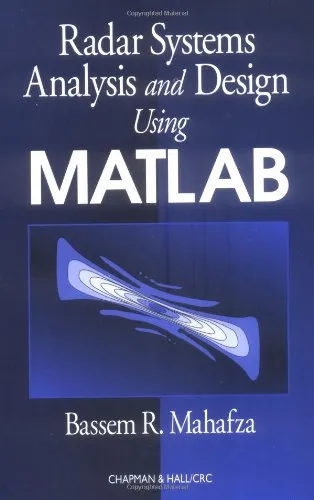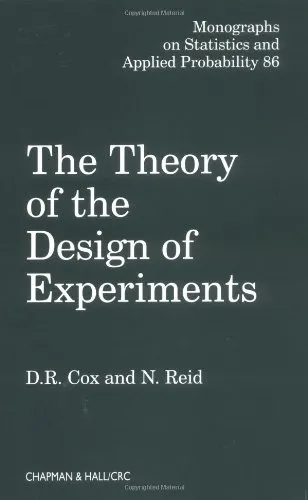UML and the Unified Process: practical object-oriented analysis and design
4.5
Reviews from our users

You Can Ask your questions from this book's AI after Login
Each download or ask from book AI costs 2 points. To earn more free points, please visit the Points Guide Page and complete some valuable actions.Related Refrences:
Welcome to the introduction to "UML and the Unified Process: Practical Object-Oriented Analysis and Design", an essential guide for software engineers, architects, and developers striving to master the principles of object-oriented design and analysis. This comprehensive book by Jim Arlow and Ila Neustadt provides a practical, hands-on approach to understanding the intricate connections between the Unified Modeling Language (UML) and the Unified Process (UP). Below, you'll discover a detailed summary of the book, key takeaways, famous quotes, and why this book stands out in the crowded world of technical literature.
Detailed Summary of the Book
"UML and the Unified Process: Practical Object-Oriented Analysis and Design" demystifies complex software engineering principles, presenting them in a reader-friendly and pragmatic way. The book serves as a guide to designing robust, efficient, and maintainable software by combining theoretical underpinnings with practical applications.
The authors introduce the Unified Modeling Language (UML), which has become the de-facto standard for visualizing, specifying, constructing, and documenting software systems. Through this visual language, developers can bridge the gap between requirements and code, leading to clearer communication and significantly reducing misunderstandings between stakeholders and teams.
The Unified Process (UP), at the heart of this book, is a disciplined approach to software development, complete with iterative and incremental practices that help teams manage complex requirements while addressing growing challenges during the software lifecycle. By blending UML with the Unified Process, the book demonstrates how to create software models that align with real-world constraints, are scalable, and support organizational goals.
Furthermore, the narrative incorporates real-world project scenarios, step-by-step modeling techniques, and examples to reinforce key concepts. The book identifies and explains the phases of the Unified Process, such as inception, elaboration, construction, and transition, offering clear workflows and practical exercises that allow readers to immediately apply what they learn.
Key Takeaways
- Understand the foundational principles of the Unified Modeling Language (UML) and why it is critical for modern software engineering.
- Learn the essential phases of the Unified Process (UP) and how iterative development fosters adaptability and reduces risks.
- Build expertise in object-oriented design principles, gaining the tools to construct scalable and maintainable software architectures.
- Explore real-world case studies and practical examples to connect theoretical knowledge with actionable insights.
- Enhance collaboration across software development teams by using standardized visual models and improving communication.
Famous Quotes from the Book
"Software design is not just about solving problems, but about crafting systems that evolve with time, change, and new demands."
"By bridging the divide between developers and stakeholders, UML creates a universal language that enables clearer thinking and better design."
"The Unified Process is not a recipe, but a flexible framework that adapts to the unique challenges of your project."
Why This Book Matters
In the ever-evolving field of software development, the need for a standardized, methodological approach has become more critical than ever. "UML and the Unified Process: Practical Object-Oriented Analysis and Design" addresses this need with unparalleled clarity and depth. By merging the theoretical elegance of UML with the pragmatic robustness of the Unified Process, the book offers a holistic approach to design and development.
This book matters not just because of its technical insights, but because it translates complex concepts into concepts that are accessible, actionable, and directly relevant to software engineers. It provides a framework that supports modern practices like agile development while allowing teams to manage complexity in real-world projects. Its focus on quality, maintainability, and iterative learning creates a timeless resource that resonates with readers long after they complete it.
Whether you are an experienced software architect looking to refine your practices or a novice developer eager to step into the realm of object-oriented design, this book offers valuable insights that elevate your craft. In essence, it equips you with the tools, techniques, and mindset necessary to tackle the challenges of modern software systems with confidence.
Free Direct Download
You Can Download this book after Login
Accessing books through legal platforms and public libraries not only supports the rights of authors and publishers but also contributes to the sustainability of reading culture. Before downloading, please take a moment to consider these options.
Find this book on other platforms:
WorldCat helps you find books in libraries worldwide.
See ratings, reviews, and discussions on Goodreads.
Find and buy rare or used books on AbeBooks.
1281
بازدید4.5
امتیاز0
نظر98%
رضایتReviews:
4.5
Based on 0 users review
Questions & Answers
Ask questions about this book or help others by answering
No questions yet. Be the first to ask!
